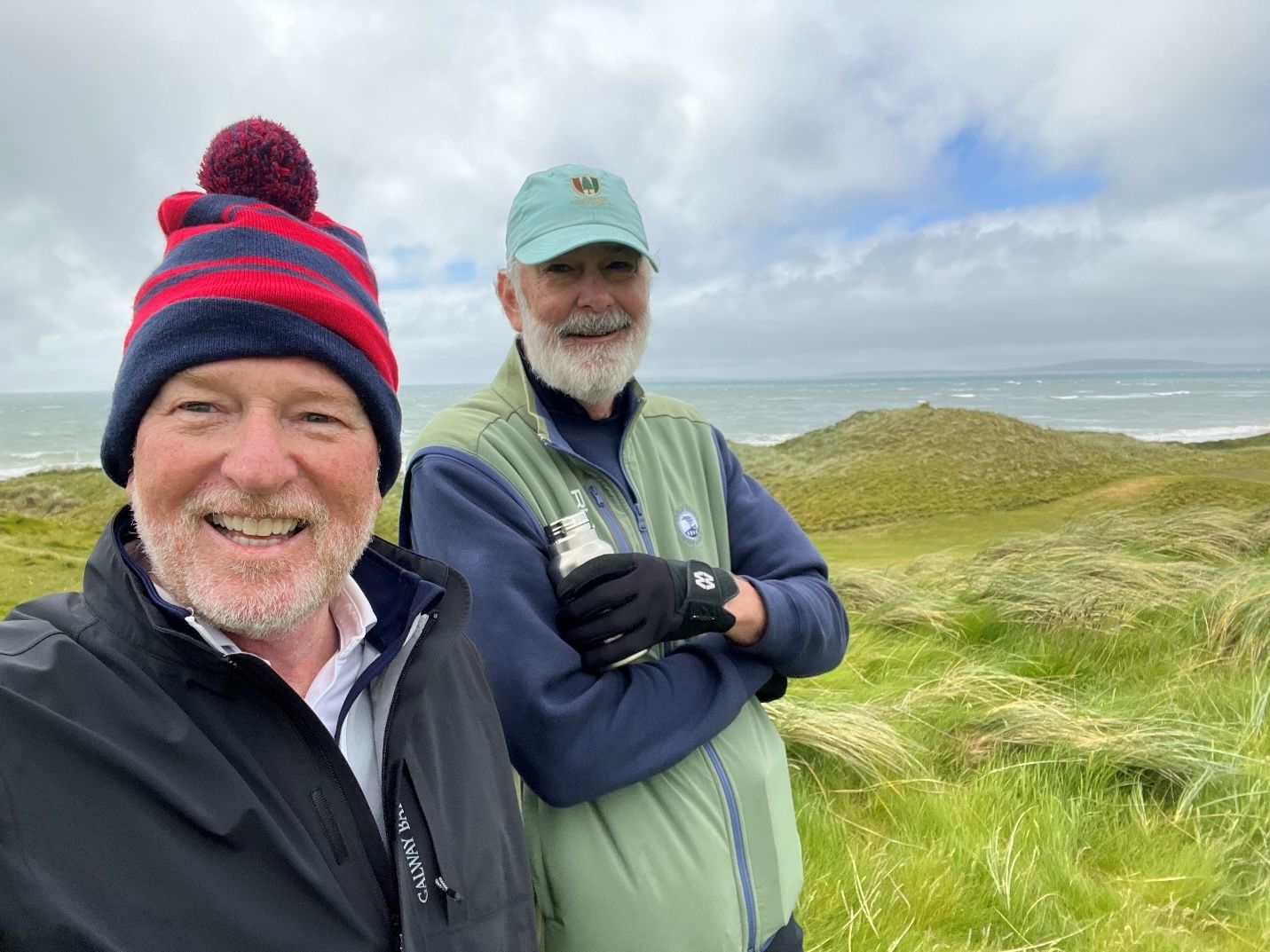
They are two of the greatest links courses in the World and lie a short two-hour and fifteen-minute drive apart from each other. Both have towering, natural, beautiful dunes and beautiful beaches/coastlines. Both lie in the West/Southwest side of Ireland.
One brother rated #24 in the World. The other brother, #37.
One was born in 1892. The other, one year later in 1893. Similar canvasses, one a Picasso, the other a Salvador Dali--both masterpieces.
They are both all about the Irish elements, wind and rain, and sun, and moist coastal air. As such, they play differently every time you put your peg in the ground and let it rip down the first fairway.
The first hole of the younger brother, Simpson’s, has a graveyard as a hazard to the right. The other, older brother’s first hole, named MacKenzie is a gentle handshake, with only a couple small pot bunkers to avoid down the left.
One has had famous designers walk its fairways--Old Tom Morris, and two Doctors, MacKenzie and Hawtree, the other, by a golf writer, a Simpson, and a wonderful, great golfer that won The Open five times.
They were both born out of the mold of railway towns, and by railroad companies yearning for a sporting destination away from the big city. One by the Listowel and Ballybunion Railway, the other by West Clare (County) Railroad. Both were successful early on in driving the golfing tourism business.
The towns they reside in are remarkably similar. Beach towns with great walks—off the course--that attract surfers, and dogs alike. Lots and lots of both.
One is Dan Fogelberg. The other, Tim Weisberg—just like the album from 1978, Twin Brothers Different Mothers
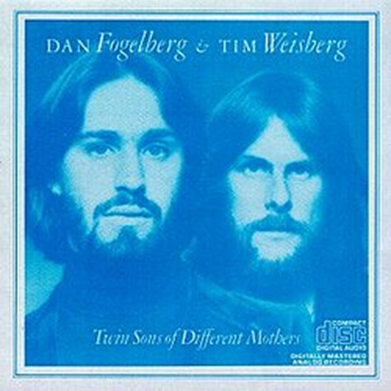
With a nod to the No Laying Up crew and podcast, if the courses were bands, who would they be? Ballybunion is the raw rock ‘n roll power guitar riffs of Jimmy Page and Led Zepplin. Lahinch? More like the softer melodic Steely Dan or Traffic’s Low Spark of High-Heeled Boys.
Ballybunion would fulfill the role of the larger, stronger younger brother that would be the captain of the football team. Lahinch, the wiser, more right-brained philosopher, writer, artist of the family.

Scooter and I planned our Connoisseurs trip of Ireland, an eighteen-day deep dive, securing our first couple tee times at two Big Royals of Northern Ireland (Portrush and County Down), but for me, it was about taking dead aim at the twin brothers to the southwest.
Ballybunion is always mentioned in the same breath as Royal Dornoch, Prestwick and Royal Troon as the top four, classic links courses in the World. There is a reason for that!
And Lahinch? It is simple, with a designer pedigree of Old Tom, Dr. MacKenzie and Dr. Hawtree, and rated #37 in the World, it attracted my attention, and friends had played it.
Having planned the trip months in advance, we couldn’t foresee the two weeks of incredible, warm and sunny weather on the front end of the trip—Royal Portrush and County Down were Irish beach days at 65 degrees, light wind and bright sunshine.
The twin brothers were our last two rounds of the trip, and we had a foreshadow of what was meant to come as we reached the Cliffs of Moher the day before we would be playing Lahinch. As we were parking our car, a mistral-like gail force wind and rain hit us hard for about 15 minutes. We knew it was coming, and boy did it ever.
We had prepared for it and with smiles on our faces, we would welcome it. Our rain gear was slightly tested two days prior at Enniscrone. Bring it on!

Lahinch: The Older Brother, Monday, May 26th
We arrived in the town of Lahinch in the late afternoon on a Sunday. As is our custom in a links town, we took the short walk from our hotel, The Vaughn Lodge, past Liscannor Road that led to Lahinch Golf Club and strolled down the N67--the main thoroughfare that twisted left toward all the pubs and restaurants. Like Enniscrone, it had its own town pub crawl—we saw Kenny, Nineteenth, P. Frawley and Flanagan’s, but opted for dinner first and made our way to The Corner Stone—recommended by Tom Coyne in his book, A Course Called Ireland. It was rocking that Sunday night and had a great menu, not to mention Tommy Fleetwood on the wall.

Whereas it seemed like half the town was at The Corner Stone, the other half was in a line half-way around the block in a queue to get into the main church in town. Late Sunday service, or a Holiday?
For a night cap after our meal, we went out to the one of the pubs down the street from the Corner Stone, Kenny’s. In addition to a Belfast, Dunville’s Peated Whiskey, we met a dog that held court there weekly after kicking tail on the beach.
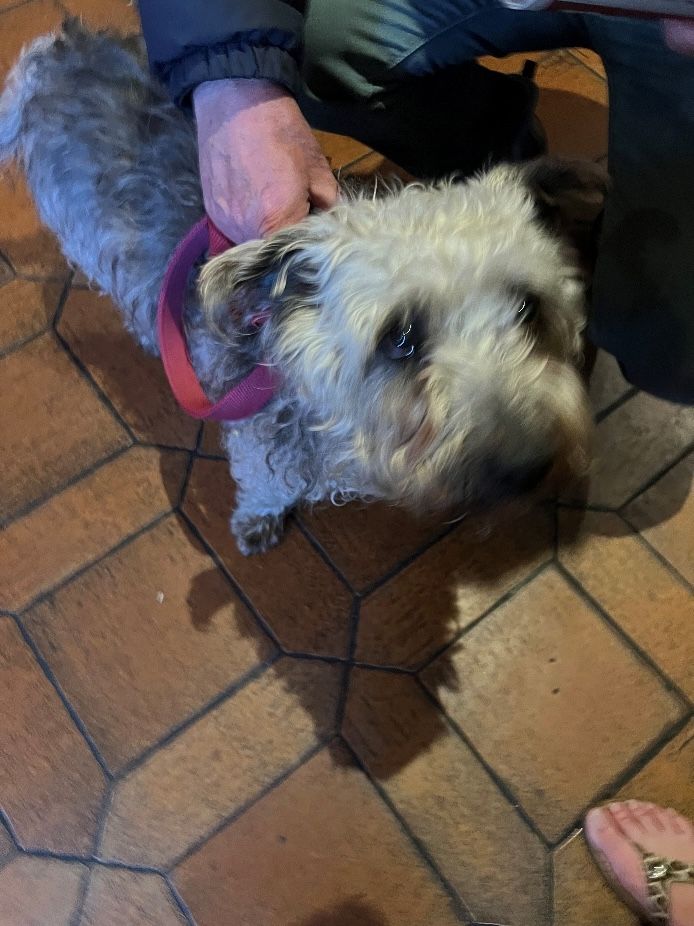
Our 7:42 tee time came early, and after packing up for the day, and a dry conversation with our German, night shift hotel manager, Franz—revolving around a wrong room number, and ghosts, or lack thereof—we were on our way.
We arrived, and a conversation ensued at the make-shift pro-shop (work on the new, $12Mil Euros expansion of the clubhouse is progressing well).
“Yes, bit of rain expected, but were all good, the range is across the street, our caddie master will see you off 10 minutes prior.”
We knew we had to strap in and buck-up.
We had a caddie for this round, as Lahinch required (along with Ballybunion, and Royal County Down the week prior) thank God! That helped with the rain, juggling bags, covers, gloves and rain gear. His name was Tommy, and he had a round, red chubby face, and great, cheery demeanor. His eyes reminded me of Peter Lawrie the actor in Casablanca. Our playing partners were two Americans, a father and Son, John & Parker who were on their last leg of a trip through the far South and West of Ireland--Old Head, Tralee, Doonbeg, and others.
I have told my friends this, along with Ballybunion and St. Patrick's, Lahinch was my favorite round of the trip. This round had rain (on and off for 4 hours) and although lighter than the next day at Ballybunion, there was a steady wind. That is why I loved it so much. Americans rarely, if not ever, play in those conditions. I attribute it to having to “be in the moment,” and focusing on every shot.
The other reason is that it is simply a fun course to play. The variety of holes is incredible, routed through, over and around dunes. It has quirkiness, and that adds to the experience. How often do we get to play blind shots and/or punch-bowl greens in the U.S.?
For instance, Number 18 tees off over part of the par 3, #5—green to your right--and bisects number 4 fairway, just short of its green. There is a “traffic cop” forecaddie that sits atop the dune that you hit over in the middle of the par 5 #4 fairway who not only lets you know when the green is clear, but also if it is clear from Number 18 tee.
My favorite stretch of holes is number 3 through 6 (4 and 5 being two of original Old Tom holes). Number 3, Clillstifiann (Gaelic for Christian) is a rugged, fun 418-yard par- 4, dogleg left that takes a straight drive and a longish second to the front/right of the green to avoid a bunker short left and trouble long. I was able to bump ‘n run a 5-iron to 3’ to get up and down. Then the fun begins.
Number 4, Klondyke, is one of the most fun, unique holes I have ever played—a short 470-yard par-5. As I mentioned above, a good drive leaves a short to mid-iron (mine a 7) over the dune into great position for your 3rd. I had a 60-yard low punch (my favorite 5-iron again) that did a roller-coaster then ran out to 20’ on the front left. No birdie on this day, but a kick-in par.

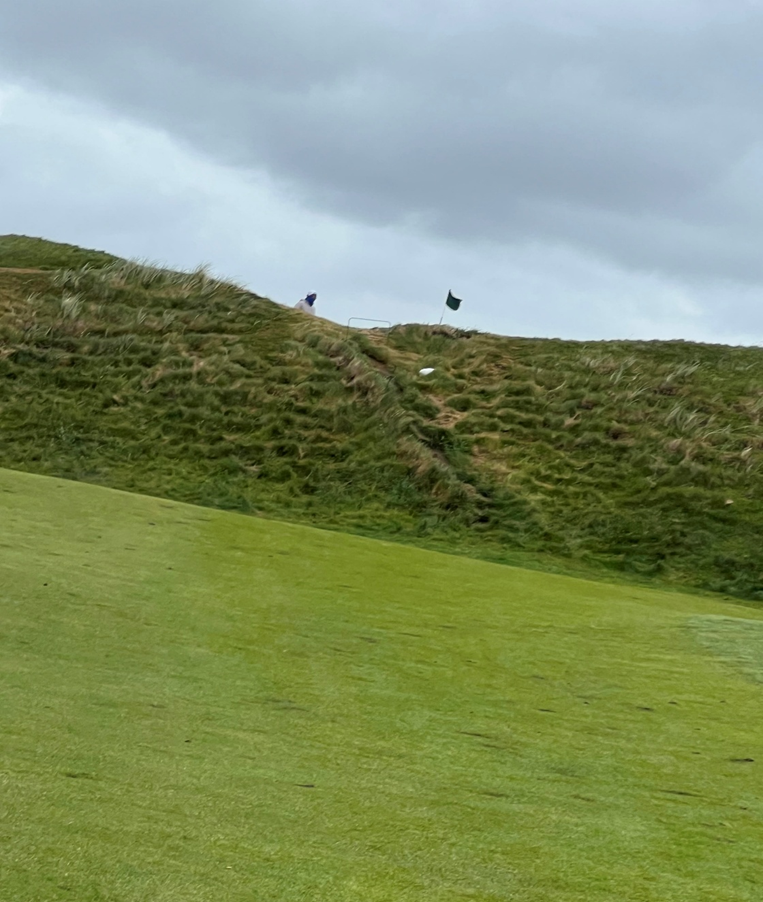
Number 5, Dell, a 150-yard par-3, up and over a dune into a heavy wind to a (blind) punchbowl green, sandwiched between two huge dunes—all of 25’ feet deep, and 60’ long. Unfortunately, I hit a fat/pull 5-iron, into the gorse, but managed a great third shot, and 25’ bomb to save bogey. Dell has easily climbed into my top ten par-3’s anywhere—and so fun to play! (There is an idea for a future blog)
After two great, fun Old Tom holes, you come to the tee box at number 6, Paradise, easily my favorite hole on the course, and my top 3 in Ireland (11 at Ballybunion, 14 at St. Patrick’s). It is a wonderful 400-yard, dogleg left, par 4. An uphill drive to the right side of about 220-230 yards leaves you safe and short of the run-out/abyss. It is somewhat of a bottomless pit, with a delightful surprise at the bottom, a wicked bunker that the local caddies call Kardashian’s Hoo-Haa (they are referring to Kim).

Atop the fairway, you gaze out to the green below, which is suspended and floating above the waves and beach below dotted with surfers. Doak, and Coore & Crenshaw are not the only experts in this feature. They learned it from this hole.
The rain continued throughout the round, as did the banter with our caddies, and camaraderie with our American playing partners. It was us vs. the course, vs. the weather, and we all won!
At one point on the back nine, Tommy looked at me and grinned, as he spoke, walking uphill toward a dune.
“A wise man once said. Ireland would be the greatest Country in the World, if they could just put a roof on top of it!”
My favorite holes on the back were twelve and thirteen. Twelve, Castle, rimmed the beach right to left with Dough Castle (the logo on their web page) in the distance. It seemed like it was six hundred yards long, and it might have been one of the four holes where the rain let up.

Number thirteen, Mine, was a short two-shotter, that turned back into the prevailing wind. It indeed looked like an old minefield from the war and sported a nice three-tiered (MacKenzie?), amphitheater green surrounded by dunes flanked by only two pot bunkers short left. At a mere 250 yards from the green tees, it played more like 330 on this day. I absolutely crushed my drive that went a mere 210 yards 😊, and an uphill wedge left me with an 8-footer that I drained to ring the bell.
We were wet, tired men as we finished off our putts on number 18. But I had a grin on my face, half satisfaction and half elation that we won this day. Maybe not on the scorecard, but we won the battle of Man vs. The Elements, and Man vs. Himself. We changed clothes in the wonderful Members locker room, had a quick bite and headed south for the next, and last stop, Ballybunion, the younger twin.

Ballybunion: The Younger Brother, Tuesday, May 27th
We arrived at Ballybunion at about 3:00 on a Monday afternoon, and we were exhausted. We answered the bell early that morning and dove right into Lahinch. As we made our way into town we saw a large sculpture/statue at the fork int the road.
“Scooter, that guy looks familiar,” I said with a quizzical look on my face.
“It is Bubba himself. None other than former President Bill Clinton,” he responded. “Looks like he’s got a 5-iron in his hand.”
We made our way to the Cliff House Lodge, our base camp for the last two-day leg of the trip. We spent the rest of the afternoon unpacking and rearranging the back of the car—the rain had taken its toll.
Our room was on the third floor, which seemed more like the seventh-floor walk-up in Soho, as there was no elevator—complete old school. There were a couple heaters/of heaters/radiators in the room, including one in the bathroom. Our balcony had a gorgeous view of the ruins of the Norse Castle—dating back to around 600 A.D. That just happens to be the logo for the Old Course at Ballybunion.
Being that HVAC and Construction is in Scooter’s DNA; he noticed that the heaters were not on. A quick call down to the desk elicited this response.
“Oh, sir, those heaters are on a timer and they won’t kick on till 6:00.” Terrific, just our luck. We knew we were not on the tee till lunchtime tomorrow, but it would be nice to have dry shoes, and gloves—which we will need again.
While I finished my rearranging and taking inventory of everything, I had purchased in the past two weeks (can I squeeze the tea and chocolates into my carry-on? How many hats did I really buy?) Scooter hit the hotel bar. When I arrived, he was hammering a group motorcycling Germans, pulling out the only 2 or 3 phrases that he remembered from childhood. They had a liking for Paddy’s whiskey as well, and as it looked almost empty, it might come to an arm-wrestling contest.
We tucked in there for the remainder, and in fact, we never did make it into town—rather, we spent all our time there, and in the clubhouse at Ballybunion—my favorite of the trip.
The Course:
The first clue about Ballybunion and what we were getting ourselves into the next day would be the view right out of our balcony. The ominous Norse Castle ruins guarding the beach, overlooking the course, and issuing you a stern warning. “You are about to go into battle, and we take no prisoners.

As you arrive, from the moment they greet you out front, till you leave hours later, you feel very welcome. Including when you walk up the hill to the starter’s shack, and see a smiling, warm, gentlemanly welcome from Tom Watson on a stone plaque. Do not be fooled, the course is just trying to lull you into a sense of calm and security.
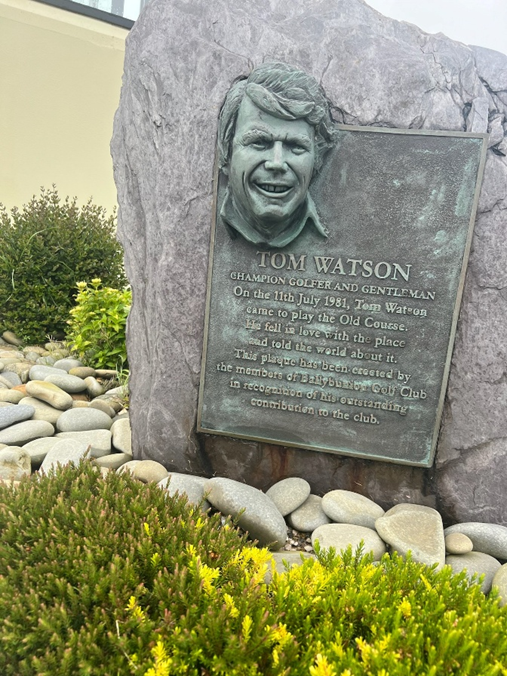
Then Bam!! You put a peg in the ground and look out toward the first green. Just ahead lining the right side of the fairway, an ominous graveyard--a bit of foreshadowing of what might come? An extreme butt-whooping!
I could almost hear the driving, haunting guitar riffs of Jimmy Page on Led Zepplin’s Immigrant Song. The Norsemen were welcoming you to the battle. I could feel it just as much as the 30-40 mph wind in my face. The adrenaline rush was just as intense as ripping down an unnamed country road in County Down, headed for the Mountains of Mourne, with a huge tour bus taking dead aim at your driver-side rear view mirror. Ahhaaahhhh aah!
Immigrant Song, Led Zepplin
Aahh, Aahh
We come from the land of the ice and snow
From the midnight sun where the hot springs blow
The hammer of the gods will drive our ships to new lands
To fight the horde, singing and crying: Valhalla, I am coming!
On we sweep with threshing oar
Our only goal will be the western shore
Ah, Ah
We come from the land of the ice and snow
From the midnight sun where the hot springs blow
How soft your fields so green, can whisper tales of gore
Of how we calmed the tides of war, we are your overlords
On we sweep with threshing oar
Our only goal will be the western shore
So now you'd better stop and rebuild all your ruins
For peace and trust can win the day despite of all your losing
What ensued was a roller-coaster, wonderful, battle of man vs. himself vs. wind. Or you vs. the Norsemen looking down over the course. I loved every minute of it! The variety of the green complexes, some up on a plateau with false fronts, others guarded by a giant dune, and others intricately routed through a valley of dunes—all demanding pin-point accurate shots—in 3 to 4 club winds!
I can see why Tom Watson loves Ballybunion so much. It is obvious why it is in that pantheon of the four classic links courses (with Royal Dornoch, Royal Troon and Prestwick). The true test for me? It is a course that I could play every day for the rest of my life. It would play differently every time.
We were playing with a Canadian couple, and all of us had caddies, our forecaddie’s name was John. As is typical in Ireland, he was a member of Ballybunion and has been playing there since he was a young lad. He had recently retired and he spent most days either playing there, or caddying. Nice gig if you can get it.
It was our last two-day rounds of the trip—The Twin Brothers, Different Mothers—that we really realized why they require at least a forecaddie at certain courses (RCD, Lahinch, Ballybunion). Other than the obvious matter of eliminating slow play, there are holes that you just could not dream of the right line off the tees, or approach shots as well. It reminds me of the story about Tom Coyne pretty much ‘getting lost’ at Royal County Down, I can see why that could happen.
Then there is the matter of the wind. My take is that Americans that go over there underestimate the wind, and how you must club-up in most cases. In addition, if you have never played the course, you have no clue of the pitch of the fairways on most holes. That could easily make the difference between piping a drive at what you think is the correct angle down the middle, only to arrive at your ball twenty yards on the gorse, right off where you thought it would be.
But it is not just the wind. The air is thicker and cooler. It can wreak havoc with iron shots and approaches. Why do you think the Irish and Scots love to play the ball low to the ground?

Just like its older brother, Lahinch, Ballybunion has an impressive set of Par-3’s, five of them. The first one, number 3, The Stile, is a brute, downhill, 200+-yarder back toward the road and clubhouse and into the wind. Number 8, Lartigue, is the Irish version of The Postage Stamp. 121-yards from the Senior tees, it faces back inland. It is a wee bit longer than The Stamp, but equally tenacious and pretty.
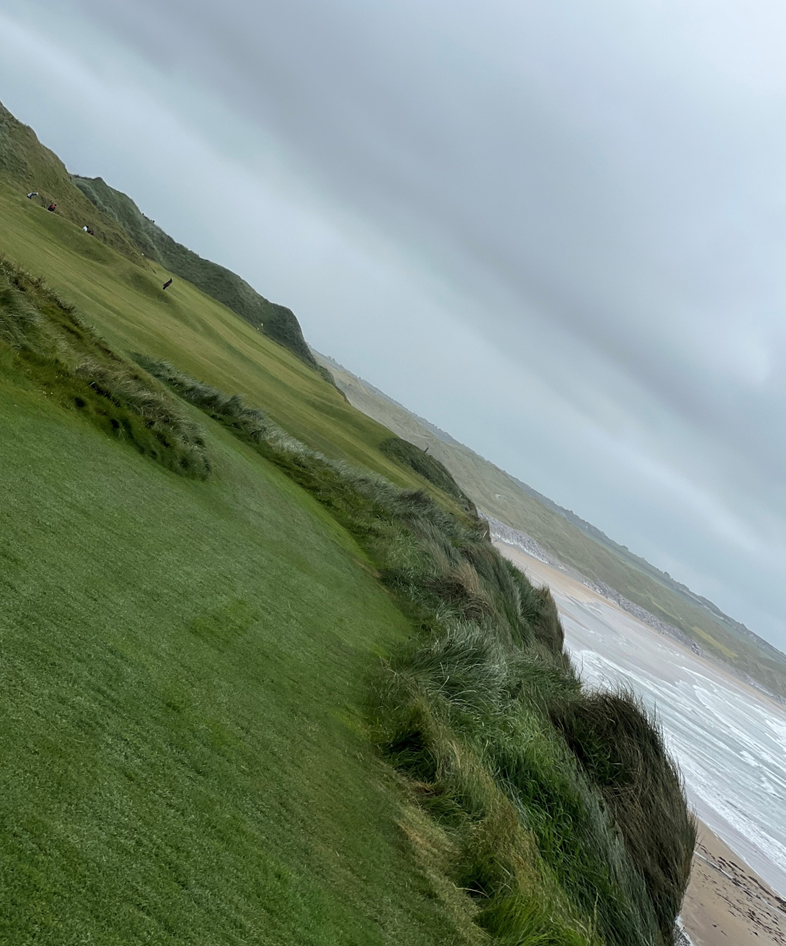
The three par-3’s on the back play tenacious due to the wind. Number 12, The Citadel, is uphill into the wind, at 193/Whites, and 171/Seniors—but played 30-yards longer in this day, and was difficult to hold the green. Number 14, Devil’s Back, was short at 125-yards, but indeed had a devilishly sloped green. My favorite, Number 15, Black Rocks, pointed back toward the Ocean into a hurting left to right crosswind. John wanted me to hit the driver, and I just could not bring myself to do so. At a 185-yard carry (more like 215) I crushed a 5-wood, my aim at least forty yards left of the green that seemed like it was in the air for 5 minutes. It feathered down on the front-edge, and rolled back a few feet for an uphill, off-the-green putt. Aside from my 55-yard putt off #5 green (Marconi) it was my best strike of the day.
In my mind, the signature holes of Ballybunion are the three that rim the Ocean & Beach—numbers 7, 11, and 17—number 17, Devil’s Elbow, the most famous and according to John, the greatest hole in all of Ireland. I tend to agree!

My favorite par-5 was #16, Windy Gap, a beautiful, fun, strategic par-5 of about five hundred yards. It was truly a 45-degree dogleg left and fun to play. Your tee ball is an aggressive angle left over a tall dune to try and catch the fairway cutting off the dogleg and saving yourself 50-60 yards off your second. I was (somewhat) successful, and wound up over the dune, but just short of the fairway, with a good lie. I pushed my second, chopped out of some wicked gorse and got up and down for what I thought was an all-star great bogey. There are horrible bogeys, but this one made me feel good. I cannot wait to play this hole again.
I later found a plague in the clubhouse describing the hole (below). With a classic back and forth between a very anal-retentive golfer and his Irish caddie, it ended-up this way, as he was hitting his 200-yard approach:
“What is to the left? What is to the right?” Finally, when he asked his bewildered caddie “What’s behind?” His caddie responded, “The Sea, Sir.
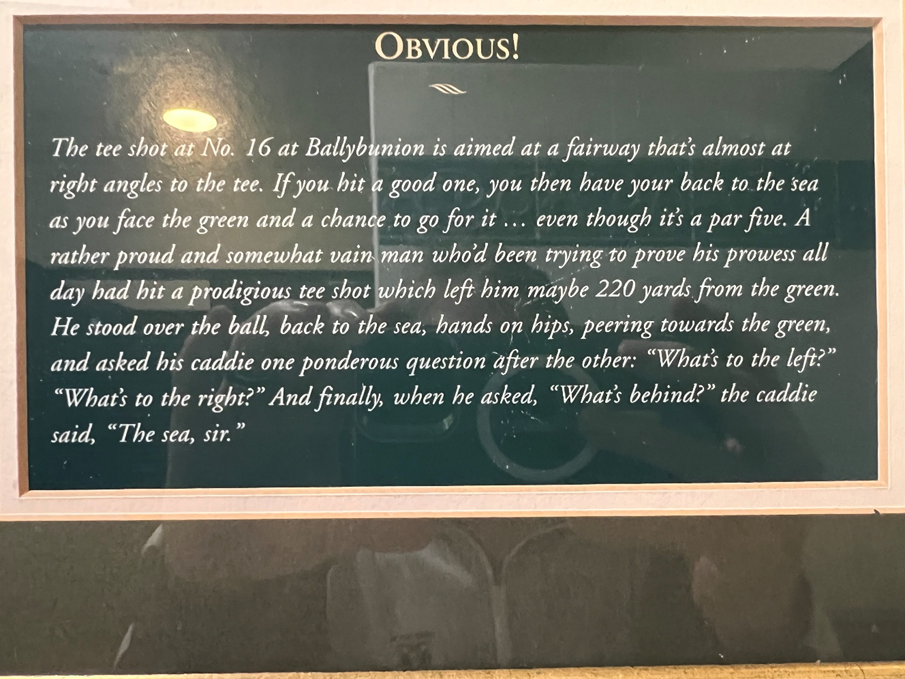
As we walked off #16 and up the hill to tee, our Caddie John told us to leave our pull-carts at the front-tees and follow him, like he has done a thousand times. It was quite a climb, and well worth it.
We reached the top, and the far-back tees and walked over to a beautiful, what looked like mahogany wood bench, with a carving of all capital letters “CTH.” It is a tribute to a deceased member who used to remark that the location felt like the closest to heaven he would ever get.
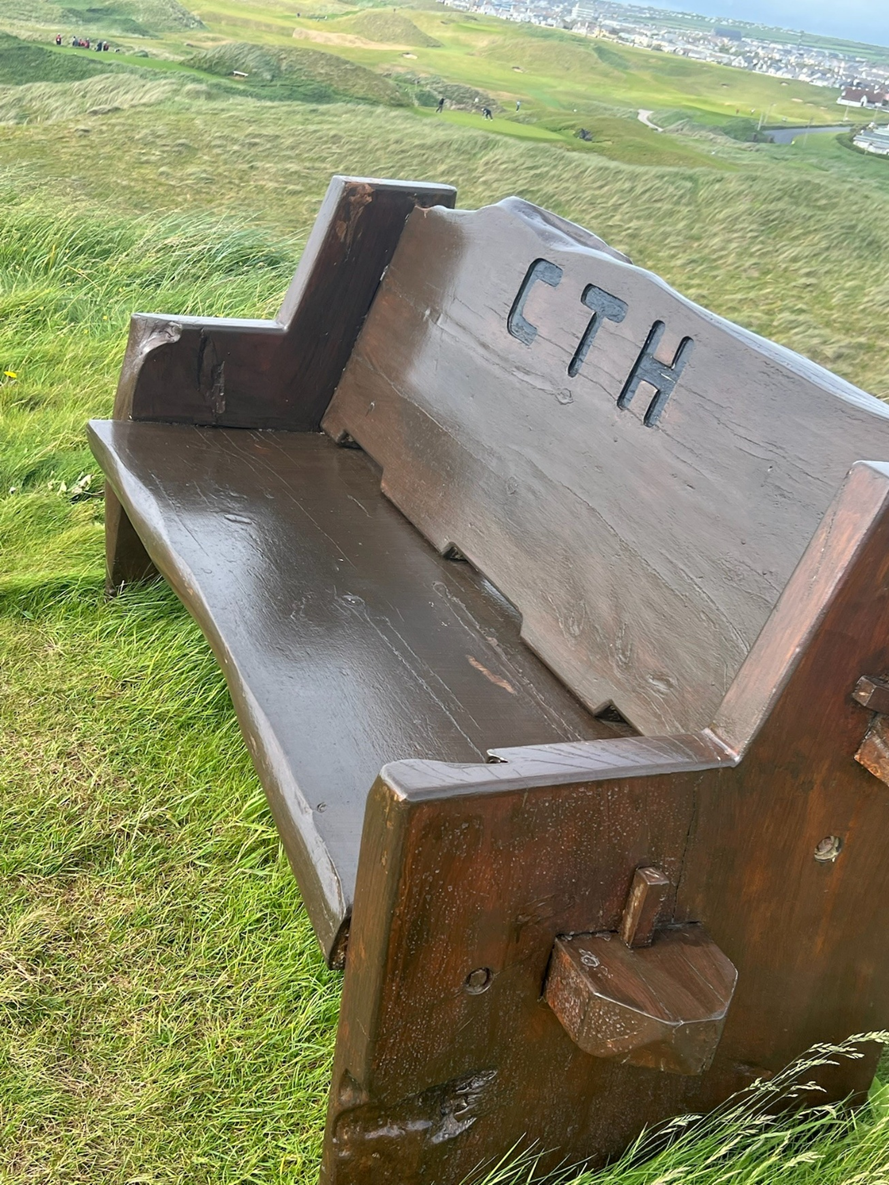
I spun around and John was looking out past the hole to the Ocean and sky above. He saw something, I could sense it. He spun around and motioned Scooter and me.
“See that break in the clouds, and where the tide kind of splits to the right of it,?” he said. “There is front coming in and it will hit us soon. There is a micro-climate of sorts, and it never fails.
Then we had the pleasure of playing #17, Devil’s Elbow. As I mentioned earlier, it has called the greatest hole in Ireland. It has everything you would want in a great hole: views of the ocean, elevation, Dunes, gorse, an amphitheater green, and strategy—especially off the tee. My take was it plays equally as fun or difficult on a windless day, as it did on this day.
The front that John mentioned was coming in the wind was howling. I played it like a par-5. I absolutely nutted my drive that probably went all of 175 yards—so much for a knock-down with a driver! Then a 7-Wood hybrid—again, another 120—I am not kidding, you cannot make this up. Then, a knockdown (successful) 7-iron about 110 yards, to the back pin. I gladly smiled and walked off as I two-putted for a bogey. Yes, another great bogey. How in the World can a 370ish par-4 play five hundred yards? It is Devil’s Elbow, and it is a Ballybunion.
John was right. It was about 15 minutes later, right after we teed off on eighteen. Called Sahara it is a nice 370-yard par-3, dogleg left through a valley of dunes, as you see the clubhouse up the big hill to the right. I had an inner calm, unlike any that I had all day.
I striped a drive to the right side, and calmly hit a 7-Iron 30’ past the pin, for an easy two-putt par. If only I could have done that ten more times in the past four hours, my scorecard would not have looked like a bloodbath. But as we always say, on a course like this, it is not about the score, it is all about the walk.
The rain started out as an “Irish Mist” as we walked down the fairway after our approach shots. Then we really kicked into gear as we drained out putts to finish the round. It was like little pellets, or needles hitting your skin. We scrambled up the hill to shelter under the clubhouse. It was dream-like, surreal, and yet calming at the same time.
As we were becoming organized, putting stuff away, paying John, and shaking hands, I could hear The Immigrant Song blasting in my ears, especially this lyric:
“The hammer of the gods will drive our ships to new lands
To fight the horde, singing and crying: Valhalla, I am coming!
On we sweep, with threshing oar…. Our only goal will be the western shore!”
As we tucked into the 19th hole for dinner, I had three thoughts: 1) We had just done battle with the Norsemen, and survived, 2) I am mentally and physically exhausted, and 3) I cannot wait to go back.
But you know, that is what is great about The Twin Brothers, both have many memorable holes and along with the dunes, greens and routing that they both possess, that is why they are rated amongst the best in the World.

Choosing my favorite links course between the Twin Brothers, different Mothers is equally as difficult as choosing your favorite child. But in the sprit of Old Tam Links Golf and this blog I will.
Whereas I cannot wait to get back and play them both as much as I can, my favorite is Ballybunion. It is the most spectacular and awe-inspiring links course I have ever played. Yes, better than Royal Dornoch, Prestwick, Royal Troon. And yes better than its other Irish counterparts to the North, Royal Portrush or Royal County Down. Absolute, sheer pleasure. Next time I hope I catch it on a sunny, slightly windy day.
Then again, maybe not!

Ballybunion’s logo, A Castle Ruin above the beach. A homage to the Norse/Vikings that ruled the area for three and a half centuries up until approximately 600 A.D. This ruin sits above the beach, right off town, south of the course—warning you of the battle to come.
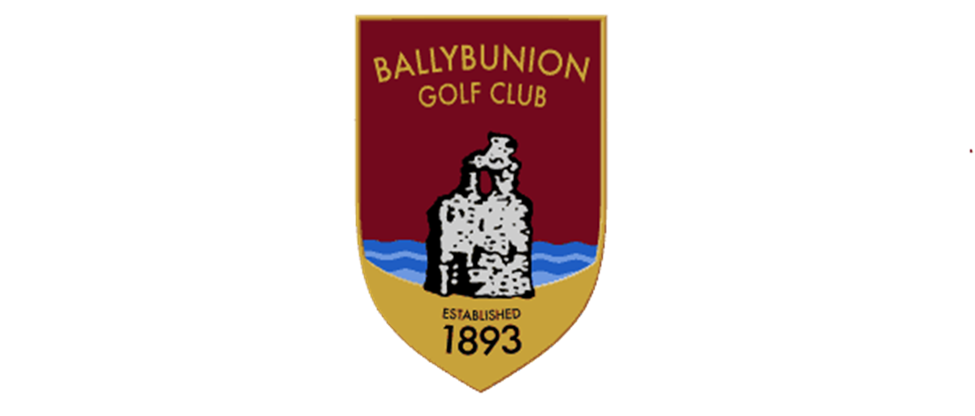
Ballybunion History

Lahinch’s logo, a homage to the original goats of Lahnich, that belonged to a caddie named Tommy Walsh who lived close to the 3rd tee, in the early years of the 20th century. The goats were a great guide to the weather at Lahinch. If they were seen hovering around the clubhouse the weather forecast was not good. But once the goats made their way out to the outer regions of the sand hills, then the weather prospects were good and the day was sure to be fine.
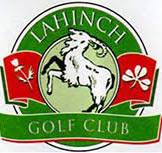
Lahinch History
